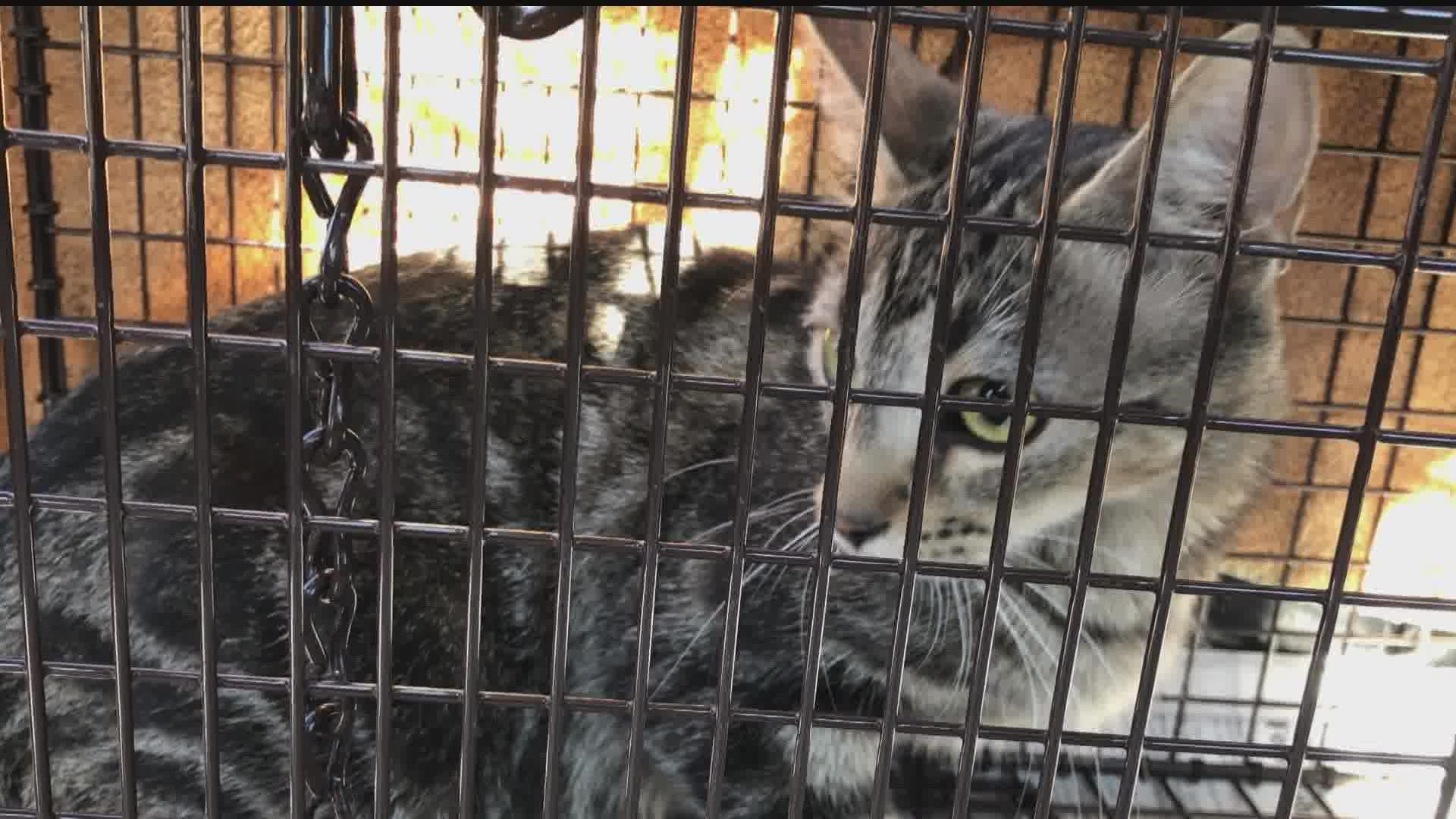BROOKLYN PARK, Minnesota — The city of Brooklyn Park has started a "large-scale community cat project" in its Sunny Lane neighborhood to address the number of cat colonies that have popped up in the area.
The Brooklyn Park Police Department learned about the problem in the spring after receiving complaints from residents.
According to BPPD Inspector Elliot Faust, two residents in the neighborhood contributed to the population issue by feeding the cats or had a number of them.
Faust said the problem was too large for animal control to tackle, which is why they requested the help of several rescue organizations.
The Bitty Kitty Brigade (BKB), Kitty Revolution and the Animal Humane Society (AHS) are all working with the city to trap-neuter-return (TNR). Since July, volunteers have TNRed more than 70 kittens and cats in the area.
"We can make a difference through TNR... and if we keep doing TNR, you'll see those numbers start to subside because they eventually die off," said Jacky Wilson, volunteer and TNR director for BKB.
Wilson estimates there are more than 100 community cats in the area.


"There's a lot of contention out there about the cat overpopulation issues and community cats and a lot of very strong feelings from a lot of people. Usually the goal from everyone in it is the same of trying to control and reduce the number of outside cats that are out there," said Dr. Graham Brayshaw, head veterinarian and directory of veterinary medicine for AHS.
AHS spays and neuters many of these community cats.
"They've even done studies looking at animals that have been trapped and euthanized, or trapped and relocated, and because the issue is the resources they have there... the people feeding, the things that the cats need to feed themselves and breed... even removing those cats doesn't control the issue. They just rebreed, repopulate and refill. So sterilization is actually the best and most humane way to help control and start to reduce the cat population," Dr. Brayshaw said.
While any social cats or kittens are able to be adopted, many of the community cats want to be outside.
"It would be the same as if you caught a wild raccoon, caught a deer. You may think it's cute, but they do not live in your house... and the same thing goes for some of these cats," Dr. Brayshaw said.
The city does not want neighbors to feed the cats. Instead, colony caretakers are the main feeders who help control colonies.
"Feeding bans, they don't work. All it's going to do is disperse the cats and they're just going to create more kittens. 80% of kittens are born outside. So what we wanted to do is locate and identify who the main feeders were, eliminate the other feeders, and then we can control these colonies in the locations of the feeders and then start working to TNR them," Wilson said.
Wilson said they are seeing a difference. Volunteers have set up trail cameras to monitor and look for any cats without a clip on their left ear that lets them know the cat's been fixed.
"We cannot adopt our way out of the overpopulation crisis. We can't adopt every cat out. They're unsocialized, community cats. I really hope that everyone can embrace TNR," Wilson said. "The more we embrace TNR and practice it, the more we're going to see fewer cats outside. That's the only way out."
The city of Brooklyn Park expects to get the community cat population under control in the neighborhood by mid-2023.
The city is asking for help locating clusters of cats. Kittens, if caught early, can often be socialized and adopted. Residents may contact Toni Weinbeck at toni.weinbeck@brooklynpark.org.
You can also support these efforts by donating to the rescue organizations involved.
Watch more local news:
Watch the latest local news from the Twin Cities in our YouTube playlist:

